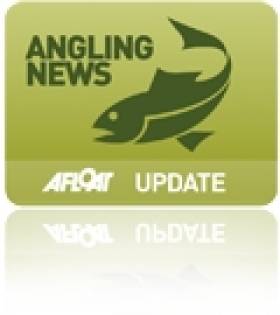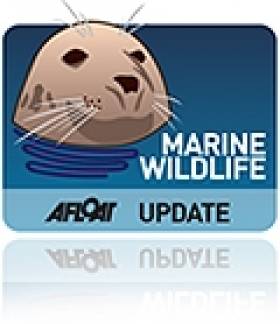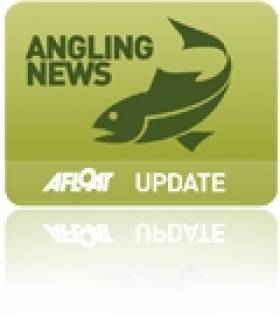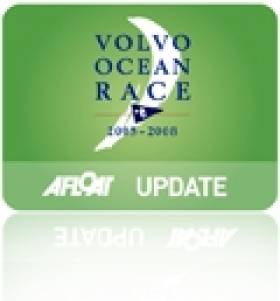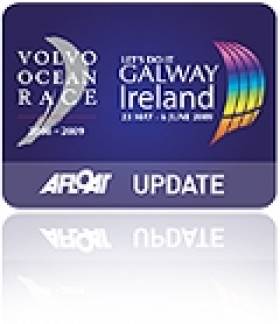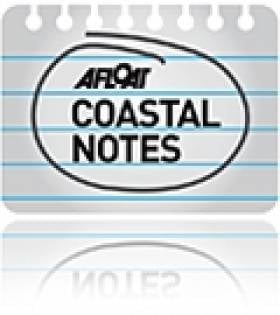Displaying items by tag: Wexford
Enniscorthy Anglers Reach Agreement Over Slaney Salmon
#ANGLING - Enniscorthy anglers have reached an agreement with Inland Fisheries Ireland (IFI) over the use of shrimp as bait to catch the Slaney's prized salmon, according to the Enniscorthy Guardian.
The Enniscorthy Local Anglers Association has also agreed with IFI officials not to overfish the river when levels are low.
New signage has now been installed along the river through the town reminding salmon anglers that no more than 15 rods will be allowed at any one time when the water is running low.
All fish must also be returned to the Slaney as per the agreement.
As previously reported on Afloat.ie, the Wexford town's anglers had secured the support of the IFI board in their call to prevent the threatened ban on using shrimp as bait.
Members of the Enniscorthy Local Anglers group argued that shrimp is ideal bait for catching salmon downstream, and said they were "baffled" by the ban on its use by IFI officials.
Pickings have been slim so far this season, with only one fish caught since it began a month ago. But local angler Kris Murphy is "generally optimistic" about the river's salmon stocks.
The Enniscorthy Guardian has more on the story HERE.
South Coast Hosts First Irish Bass Festival
#ANGLING - Ireland's south coast will play host to the first Irish Bass Festival this July.
Created and organised by Absolute Fishing, the lure angling event is open to all shore anglers at various venues between Tramore and Dungarvan in Co Waterford, which provide some of the best bass fishing in Europe.
The Irish Bass Festival will operate on catch-and-release rules, with anglers having to photograph their fish, using their own measuring board combined with a unique ID card provided by the organisers.
Competing anglers are also free to roam and fish anywhere along the coastline from Wexford to Cork - provided they're back in time to register their fish!
Details on requirements, reception and fishing times are available on the Irish Bass Festival website HERE.
First Humpback Whale Sighting of 2012 Is a Newcomer
#MARINE WILDLIFE - Ireland's first humpback whale of the year has been spotted off the Wexford coast.
The sighting was made yesterday by whale-watchers among a pod of fin whales some three miles south of Hook Head, according to TheJournal.ie.
The Irish Whale and Dolphin Group (IWDG) has also confirmed that the humpback is a new sighting in Irish waters, and has been designated the reference HBIRL18.
RTÉ News has images of the humpback whale HERE.
Shore Angling Competition Raises Funds for Courtown Lifeboat
#ANGLING - Strongs winds and heavy seas weren't enough to dampen the spirits of the anglers taking part in the Courtown Sea Anglers RNLI fundraising event last Sunday, the Gorey Guardian reports.
Top winner on the day in the shore angling competition at Kilgorman beach was James Ryan from New Ross, who hooked an impressive 24 fish - all of which went back in the water under catch-and-release rules.
Anglers from Galway, Belfast, Clare, Wicklow, Dublin, Waterford and across Wexford took part. It is hoped that more than €4,200 was raised to support the Courtown lifeboat.
Wexford Hosts 24th Winter Shore Angling Festival
#ANGLING - The beaches of east Wexford will again play host to the 24th Winter Shore Angling Festival from 26-28 January.
The cream of sea match angling talent from the United Kingdom and Ireland will be taking advantage of the "exceptional" catches of codling and coalfish in the area as of late, as previously reported on Afloat.ie.
First prize for individuals in 2012 will be €500, apart from two- and four-man competitions and optional pools.
Headquarters for the three-day event will be Seán Óg’s Complex in Kilmuckridge, where accommodation can be reserved through the competition organisers with a special rate of €110 for four nights (breakfast included).
The entry fee of €150 includes a special presentation dinner where trophies will be presented for first, second and third place overall.
For entry details contact Warren Doyle, 98 Seacrest, Bray, Co Wicklow at 086 8069961 (evenings only) or [email protected].
Codling, Coalies Providing Great Sport for Wexford's Winter Anglers
#ANGLING - The winter shore angling season on Wexford's coast has been "exeptional" so far, writes Ashley Hayden in the Enniscorthy Guardian.
With cod shoals moving north into the Irish Sea, some impressive catches of codling have been reported at Tinnebearna and Courtown.
"The cod stock off Ireland's south coast, judging by the fish which I have encountered over the last three years, are now of egg-laying size," writes Hayden.
"Managed properly over the near future, Ireland may just have a working resource again, of benefit to both commercial and recreational interests."
Coalfish are also becoming more prevalent, and are providing great sport to Wexford's shore anglers.
Hayden writes: "Coalies are smash and grab raiders, darting in to grab your bait, hitting it hard before subsequently swimming away and re-grouping, only to have another go."
The Enniscorthy Guardian has more on the story HERE.
Fin Whales Could Be Wexford Bound
#MARINE WILDLIFE - The Enniscorthy Guardian reports that the fin whales that have been sighted off Tramore in recent weeks may soon make their way towards the Wexford coast.
Afloat.ie recently reported that Waterford was the 'best place to be' for whale watching, with the Irish Whale and Dolphin Group (IWDG) confirming fin whale sightings along a 20-mile stretch from Stradbally to Brownstone Head.
Cetacean fans are being advised to keep an eye on the coast from Hook Head to Brownstown headland to catch a glimpse of the fins, which are renowned for their six-foot whale blow.
Whale watchers are also urged to report any sightings to the IWDG online at www.iwdg.ie to help keep its database up to date.
Abu Dhabi Team Suffer Broken Mast Six Hours Into VOR
#VOLVO OCEAN RACE - Abu Dhabi Ocean Racing's challenge was nearly scuppered at the outset when their yacht suffered a broken mast just hours into the first leg of the Volvo Ocean Race yesterday. Dismast photos by Paul Todd below.
The accident occurred 30 nautical miles south of Cartagena on the Spanish Mediterranean, when the yacht Azzam encountered rough weather some six hours after leaving Alicante.
"Our mast broke into three pieces when landing off a big wave in 30+ knots of wind," said skipper Ian Walker. "We were sailing under a J4 and two reefs. We do not as yet know the cause."

A first leg disaster for Ian Walker on Abu Dhabi - Photo: Paul Todd
The broken mast pieces and rig were recovered, thanks to the "courageous" intervention of crewman Wade Morgan, who entered the water to cut away the top of the mainsail.
Walker added: “The mast from the first spreader up is now secured to the port side of the boat. About three or four metres protrude from behind the boat. A spider web of lines is keeping the operation intact. The crew are deeply disappointed.”
Yacht and crew - which includes Wexford man Justin Slattery - were last night headed towards the flatter water at Cabo de Palos before returning to Alicante under motor to begin repairs and get back in the race.
Abu Dhabi Ocean Racing are one of six teams competing in the epic round-the-world yacht race, which is set to finish in Galway next July.
Earlier this week the team finished first in the initial in-port race of the competition.
The official Volvo Ocean Race website has more on the story HERE.
Irish Sailors Get Ready for First VOR In-Port Races
The first of the in-port races ahead of the Volvo Ocean Race start tomorrow in Alicante – and top Irish sailors are among the six teams competing.
Wexford’s Justin Slattery is on Abu Dhabi Ocean Racing, which is competing in the race for the first time.
Skipper Ian Walker told Sail World: "Everything is ready and we can’t wait to line up against the other teams... The forecast is for strong breeze on Saturday so there will be extra pressure on the crew to get it right."
The team has another Ireland connection in its commercial director David Hassett, a veteran of the Irish yachting scene and backer of Ireland's Green Dragon team in the 2009 race.
Elsewhere, Kerryman Damian Foxall is a watch leader on Groupama, captained by debuting VOR skipper Franck Cammas - who last month received one of France's most prestigious sporting honours.
Meanwhile, the Chinese entry Team Sanya, which is part sponsored by Discover Ireland, is hoping skipper Mike Sanderson - who took Telefónica Blue to the podium at every stage in the 2009-09 race - can repeat his past successes.
In-port races take place in all 10 host ports along the 39,000-nautical-mile route, and as they account for more than 20% of the points, no team will be taking them easy.
As previously reported on Afloat.ie, a delegation from Galway - hosts of the final stage of the race next summer - will be in Spain for a week of events beginning tomorrow ahead of the start of the race proper on 5 November.
Sail World has more on the story HERE.
Wexford Club Honoured in Coastcare Merit Awards
Wexford Sub Aqua Club has been recognised for its commitment to the environment in an awards ceremony in Dublin last week.
The Wexford People reports that Minister of State Fergus O'Dowd presented the club with An Taisce's Coastguard Initiative of the Year Award for its work in cleaning up the beaches and waters around Kilmore Quay.
The club was one of many organisations and volunteers throughout Ireland recognised by An Taisce's Coastcare Merit Awards.
Among them were the Portmarnock Community Coastcare Group and Malahide resident Philip Lynch, who was rewarded for his efforts in protecting the north Dublin town's coastline.


























